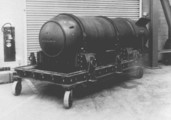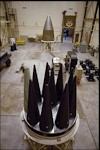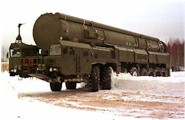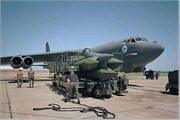|
Front
Page News Items From 2004: |
|
|
|
|
The Ploughshares Fund Profiles My Work
(December 2004) |
A Grantee
Profile on the front page of the
Ploughshares Fund web site said that I
"deftly use the Freedom of
Information Act (FOIA) to obtain critical documents that
reveal exactly what U.S. nuclear weapons policy is."
The fund said my "sleuth work provides crucial information
for public scrutiny and debate." |
 |
|
|
|
|
|
|
|
|
|
|
|
 |
Declassified documents give background for 1958 accident
Nuclear Weapon Was Not Armed
(September 2004)
The nuclear bomb
that was jettisoned near Savannah River in Georgia by an Air Force
bomber in 1958 was not armed, but the risk of flying with nuclear
weapons at the time was considerable. An Air Force survey of the
impact site was announced on September 29, according to the
Atlanta Journal-Constitution. |
|
|
|
|
|
 |
New
NRDC Nuclear Notebook published
US Nuclear Reductions Outlined
(August 2004)
The U.S.
government has announced that it will reduce its total
stockpile of nuclear warheads by "almost half" before 2012.
This Nuclear Notebook in the Bulletin of the Atomic
Scientists shows what will be retired and the warheads that
will be retained for the indefinite future. News
coverage in
Stars and Stripes and
IRNA (Iran). See also
the
fact sheet at NRDC. |
|
|
|
|
|
 |
New
NRDC Nuclear Notebook published
Russian Nuclear Forces Profiled
(June 2004)
Russia
shows renewed interest in nuclear weapons, according a new
overview in the
Bulletin of the Atomic Scientists. Russia now has
approximately 7,800 operational nuclear warheads and is
modernizing all three legs of its triad of delivery systems. |
|
|
New Nuclear Weapons Stockpile Plan
published
Secret US Stockpile Plan Issued:
Here Are the Numbers
(June 2004)
The United States plans to scrap nearly
half of its 10,000 nuclear weapons between now and 2012. The
Stockpile Plan is secret, but an estimate of the warhead numbers is now
available on the
NRDC web site. |

Some 6,000 nuclear warheads
will remain in the stockpile |
|
|
|
|
|
|
|
|
 |
New NRDC Nuclear Notebook in
the Bulletin of the Atomic Scientists
US Nuclear Forces, 2004
(May 2004)
The United States has approximately 7,000 operational
nuclear weapons and another 3,000 intact warheads in
reserve. Weapons modernization and life-extension programs
are underway across the board to maintain and enhance the
capability of the nuclear deterrent.
|
|
|
Meiji Gaikuin
University
prints article about FOIA
Nuclear Disclosure:
A Threat to National Security? (April 2004)
The dilemma: some nuclear information must remain a secret,
but much is withheld that can be declassified with no harm
to national security. Declassification of nuclear
information in the United States and Denmark provide
examples to follow for "new" FOIA countries like Japan.
|

Much
information is withheld simply because it concerns nuclear
issues |
|
|
|
|
|
|
See also: Front Page News Items from
2008,
2007,
2006 and
2005
|

